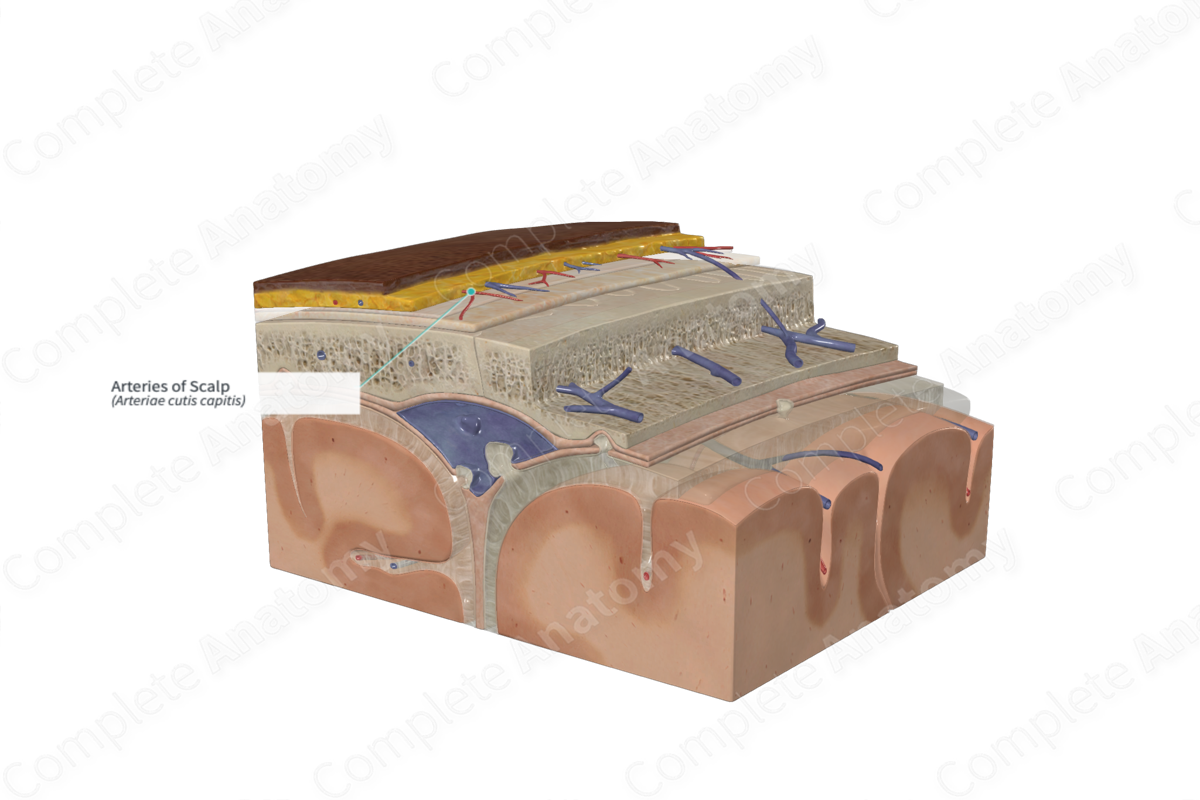
Quick Facts
The arteries that supply the scalp are located in the subcutaneous tissue and form an anastomosing network.
Related parts of the anatomy
Structure
The scalp has a particularly rich blood supply, with vessels located in the dense subcutaneous tissue. Branches of the external carotid artery supplying the scalp include the occipital, posterior auricular, and superficial temporal arteries. Branches of the internal carotid artery include the supraorbital and supratrochlear arteries (Moore, Dalley and Agur, 2013).
Key Features/Anatomical Relations
The arteries of the scalp course through the subcutaneous tissue. These arteries form an anastomosing network with adjacent and contralateral arteries. The arteries are attached to the fibrous connective tissue of the subcutaneous tissue, thus, if a vessel is cut, the ends become retracted between the fibrous septae which may lead to profuse bleeding (Ellis and Mahadevan, 2014).
Function
The arteries of the scalp provide blood to the five layers of the scalp.
References
Ellis, H. and Mahadevan, V. (2014) 'The surgical anatomy of the scalp', Surgery (Oxford), 32, pp. e1-e5.
Moore, K. L., Dalley, A. F. and Agur, A. M. R. (2013) Clinically Oriented Anatomy. Clinically Oriented Anatomy 7th edn.: Wolters Kluwer Health/Lippincott Williams & Wilkins.
